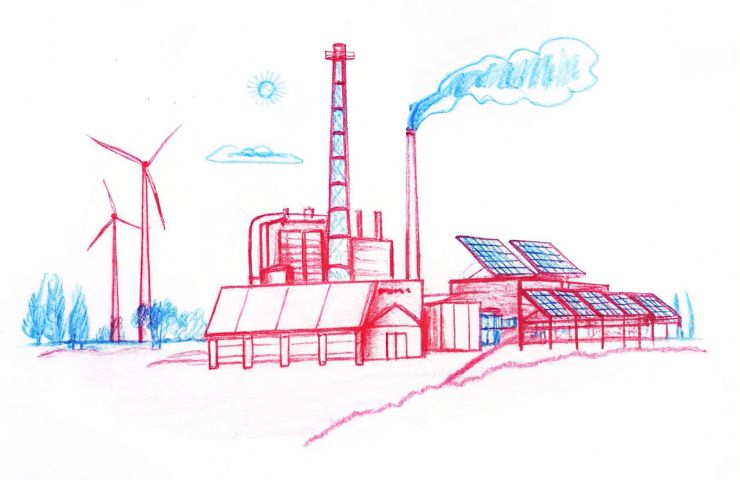
Green Steel: Cost Parity with Coal by Early 2030s according to Salzgitter’s CEO
October 21, 2025Big news out of Germany: Gunnar Groebler, CEO of Salzgitter AG, just announced that climate-neutral steel made with green hydrogen is set to beat traditional coal-based steel on price between 2030 and 2033. It’s a hands-on solution that finally kicks the green premium to the curb and might just be the game-changer heavy industry needs to slash emissions.
Why Cost Parity Matters
As things stand, green steel still carries that “green premium” simply because swapping coal for hydrogen isn’t cheap—yet. Steel production makes up about 7–9% of global CO₂ emissions, and Germany—which leads Europe in steel output—is wrestling with trade disputes, old-school overcapacity, sky-high energy costs, and fierce competition from abroad. Hitting the EU’s bold climate goals means cutting those emissions to the bone, and reaching cost parity is what’ll make zero-carbon steel stand or fall on its own merits—no massive subsidies or crippling carbon levies required. And don’t forget, automakers and builders are already circling low-carbon steel, while carbon border taxes loom for anything made the old-school way.
The Secret Sauce: Green Hydrogen and H2-DRI-EAF
Here’s the real magic trick: green hydrogen plus the H2-DRI-EAF route. You make hydrogen by running water through an electrolyzer powered by renewables—no CO₂ in sight. Today, that hydrogen costs roughly $3.60–$5.30 per kilo, but by 2030 it could drop to around $1.80–$2.00 per kilo thanks to cheaper wind and solar and bigger electrolyzer factories. Then comes the H₂-DRI step: hydrogen meets iron ore and churns out direct reduced iron plus a puff of water vapor. To give you a ballpark, about 50 kilos of hydrogen will produce a tonne of steel, and making that hydrogen gobbles around 50–55 kWh per kilo. When hydrogen prices land near $1.00 per kilo, the H2-DRI-EAF path actually undercuts the old blast furnace–basic oxygen furnace cycle. Think scissors slicing through paper: one blade is falling clean energy costs, the other is rising carbon prices.
Built for the Future: Energy Demands and Infrastructure
If Germany wants to decarbonize all 42 million tonnes of its annual steel output, it’ll need about 100 TWh of extra renewable juice—think a 20% hike in the country’s electricity use. That means beefing up wind farms, solar parks, grid upgrades, and building out hydrogen storage and pipeline networks. It’s a tall order, sure, but it’s also a golden opportunity for clean energy developers and tech innovators. Germany’s Energiewende playbook already calls for a huge swell in renewables, and the steel sector’s shift to hydrogen is like rocket fuel for that plan. Throw in Europe’s hydrogen strategy and planned import pipelines, and you’ve got real momentum toward a truly integrated hydrogen economy.
Salzgitter’s Hydrogen Ambitions
Salzgitter AG isn’t just dipping its toes; it’s aiming to guzzle up to 150,000 tonnes of hydrogen each year once its green steel lines fire up. The plan was to start shipping green steel in 2027, although Groebler recently admitted to some delays in the next project phases—blame it on the usual economic and regulatory maze. But make no mistake: the company is all in, pouring billions into swapping out blast furnace–basic oxygen furnace setups for full-scale H2-DRI-EAF plants.
Collateral Impacts: Economics, Society and Geopolitics
This shift ripples far beyond the furnaces. On the dollar front, steelmakers are staring down multi-billion-euro price tags to revamp or rebuild plants. Workers will need fresh training, and areas built around old coal-steel hubs could feel the social shake-up if governments don’t step in. On the strategic chessboard, Europe stands to carve out a lead if it rolls out low-carbon steel before China or the U.S., especially with the EU’s upcoming carbon border adjustment rules and green public tenders tightening the screws on high-emission imports.
And it’s not just steel that wins. Cranking up renewables and a hydrogen backbone could open doors for chemical makers, heavy transport, you name it. Politically, Chancellor Friedrich Merz is calling for a “steel summit” to get industry and unions on the same page, and the SPD is even talking state stakes in mills that are on the brink. Plus, cutting out coal doesn’t just slash CO₂; it chops local pollutants, which is a win for folks living downwind of factories.
Serious About Leading the Energy Transition
Groebler’s message to Berlin and Brussels? Keep the foot on the gas. Easing up now could strand assets and squander billions in public funding. With carbon levies likely climbing to $30–$50 a tonne and green hydrogen costs set to fall, green steel is fast closing in on the sweet spot. The catch? Clear, stable policies are the real secret sauce—without them, private investors will hesitate, and the momentum might just sputter out.
Here’s the bottom line: getting green steel to price-parity isn’t just a tech checkpoint; it could spark a full-blown clean energy renaissance. As renewables boom and green hydrogen prices keep sliding, Europe might just grab the lead in the next industrial era—built for the future, emissions-free, and tougher than ever on the competition.



 With over 15 years of reporting hydrogen news, we are your premier source for the latest updates and insights in hydrogen and renewable energy.
With over 15 years of reporting hydrogen news, we are your premier source for the latest updates and insights in hydrogen and renewable energy.
You have a dearth of CURRENT information about the companies starting to drill for White/Gold Hydrogen. Current projections indicate that White/Gold Hydrogen can be extracted for $1 or less in some instances. Plus in the extraction process scarce Helium is a by-product.